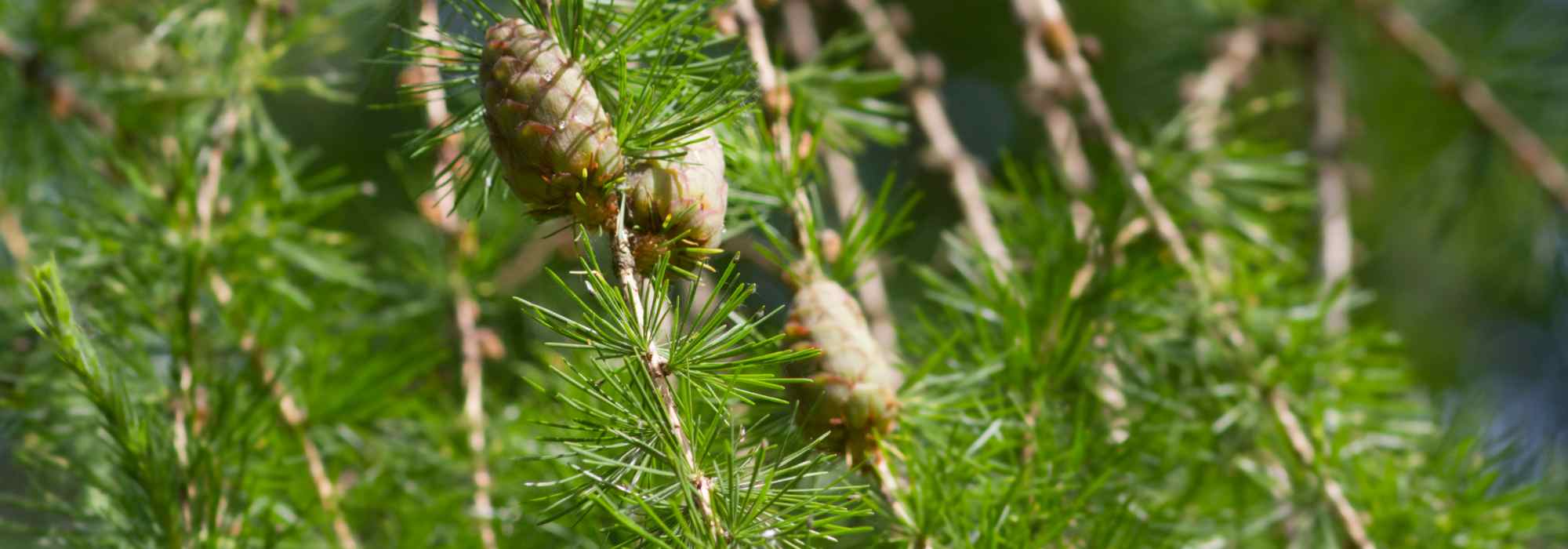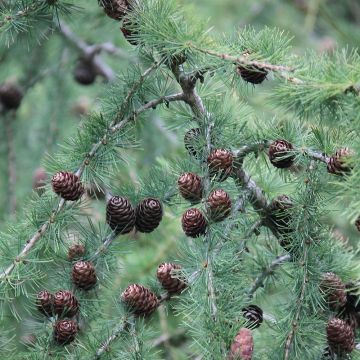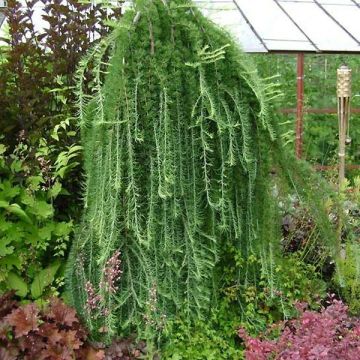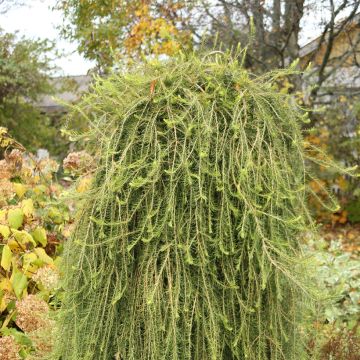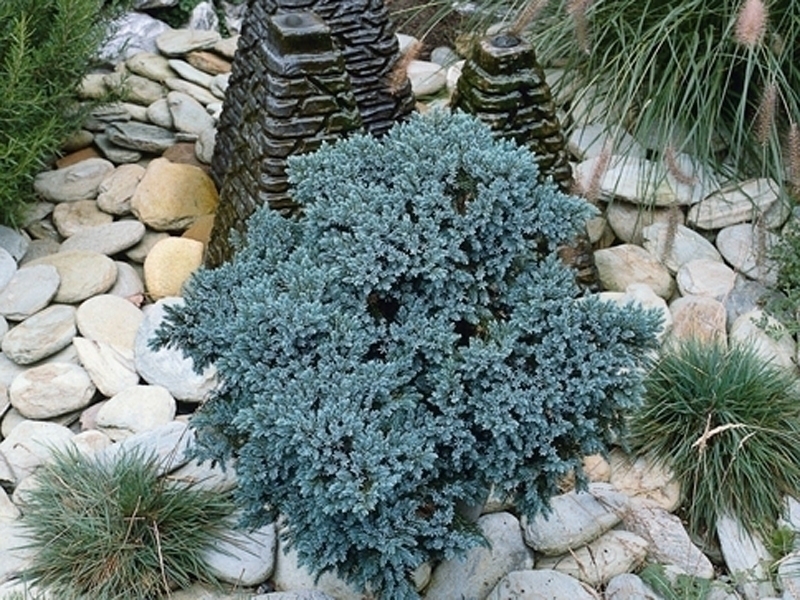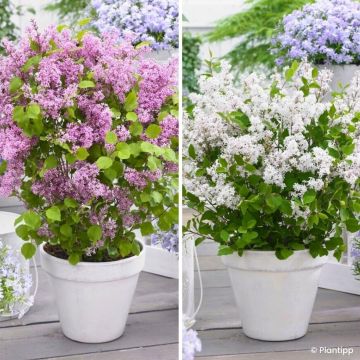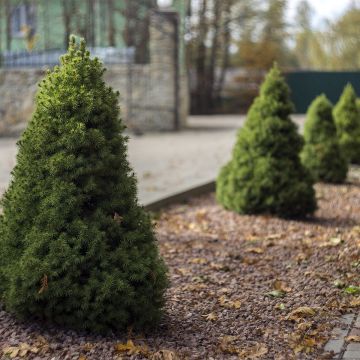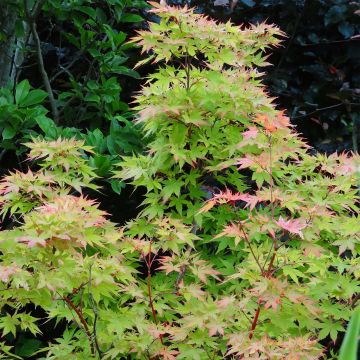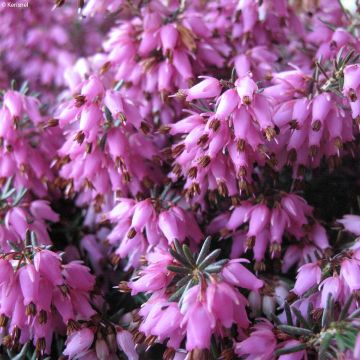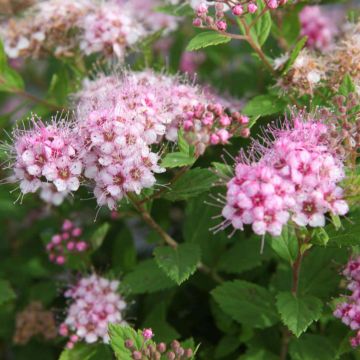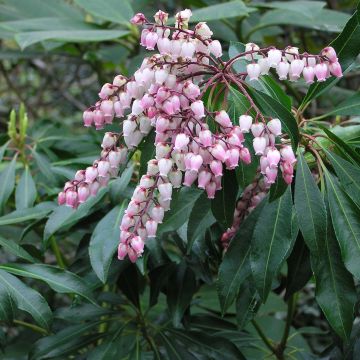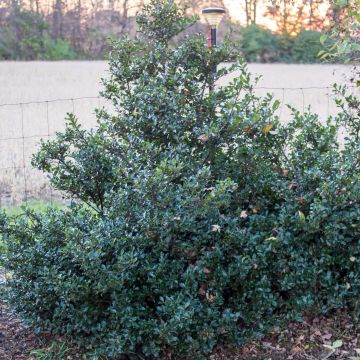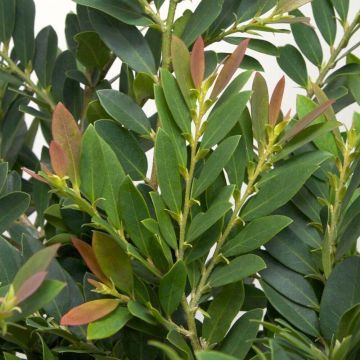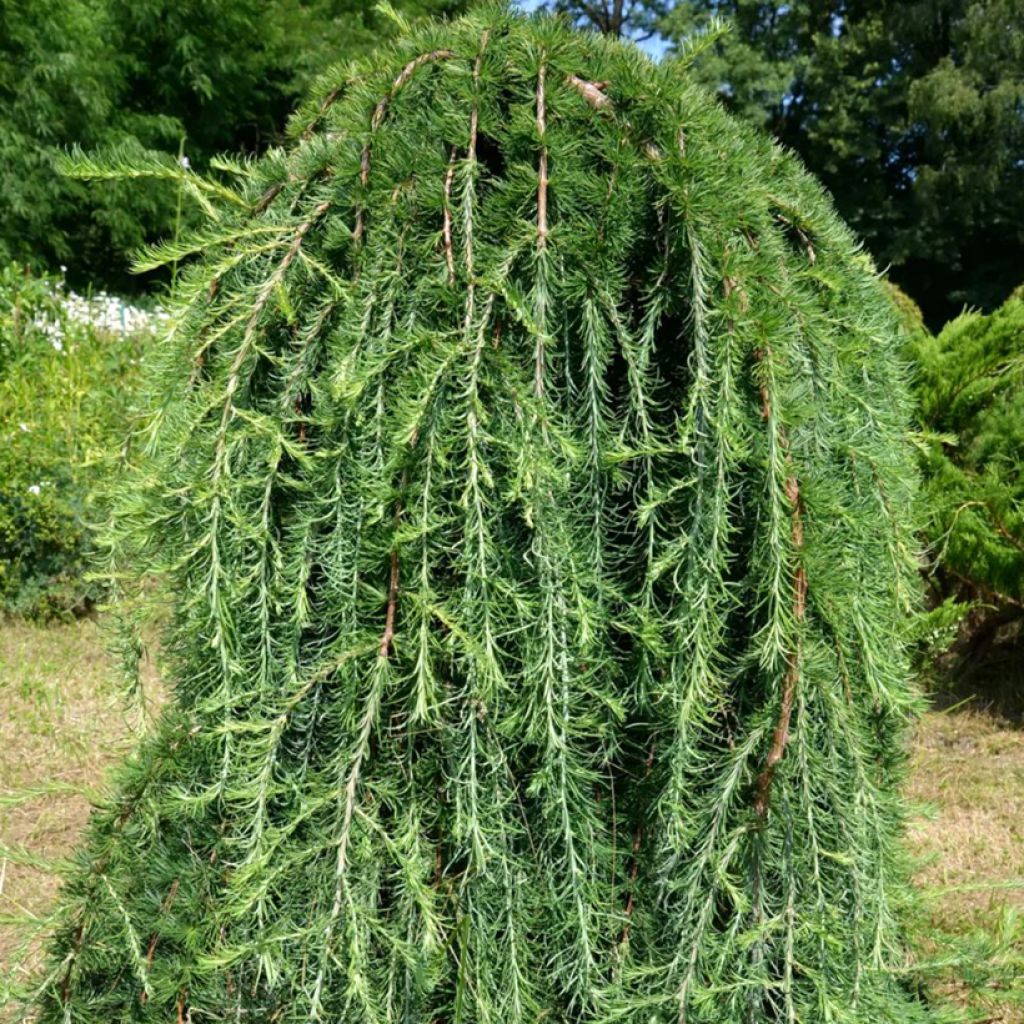

Larix kaempferi Boring Weeper
Larix kaempferi Boring Weeper
Larix kaempferi Boring Weepe
Japanese Larch, Dunkeld Larch
Special offer!
Receive a €20 voucher for any order over €90 (excluding delivery costs, credit notes, and plastic-free options)!
1- Add your favorite plants to your cart.
2- Once you have reached €90, confirm your order (you can even choose the delivery date!).
3- As soon as your order is shipped, you will receive an email containing your voucher code, valid for 3 months (90 days).
Your voucher is unique and can only be used once, for any order with a minimum value of €20, excluding delivery costs.
Can be combined with other current offers, non-divisible and non-refundable.
Home or relay delivery (depending on size and destination)
Schedule delivery date,
and select date in basket
This plant carries a 24 months recovery warranty
More information
We guarantee the quality of our plants for a full growing cycle, and will replace at our expense any plant that fails to recover under normal climatic and planting conditions.
Would this plant suit my garden?
Set up your Plantfit profile →
Description
The Larix kaempferi 'Boring Weeper' is a Japanese larch characterised by its weeping habit and moderate growth. It is a deciduous conifer with drooping branches covered in silver-blue-green needles from spring to summer, turning yellow in autumn. This larch also produces decorative young cones. It is very unusual and will be highlighted in the centre of a flower bed or as a solitary specimen in a small garden.
Larix kaempferi 'Boring Weeper' is very similar to the variety 'Stiff Weeping', but it was selected by a different breeder. The wild Japanese larch, Larix kaempferi (synonym Larix leptolepis), is a large Japanese conifer with a conical habit that can reach a height of 30m. It has deciduous foliage and is native to the mountains of the Hondo Island, but it adapts very well to cultivation in lowlands, in cool oceanic climates. It belongs to the pinaceae family, like pines, firs, and spruces. It is a very similar species to Larix decidua, the European larch. Very cold-resistant, the Japanese larch likes humus-rich, moist, and slightly acidic to neutral soils.
Larix kaempferi 'Boring Weeper' forms, after 10-12 years, a 2-3m tall weeping bush with a spread of less than 1m. Its growth rate is moderate. Its long branches, drooping to the ground, form a dense, but more or less regular, fountain shape. From spring to summer, its foliage is generally green-blue, composed of soft non-prickly needles. They are inserted in small dense clusters on the branches. In autumn, these needles turn golden yellow and then bronze before falling. Its young branches have an attractive winter bark, ranging from pale pink to brown. Flowering, on a mature specimen, occurs from March to May, starting before the appearance of the needles in spring. The tree produces male and female cones. The male cones are numerous, small, and yellowish, hanging under the branches. The female cones, on the other hand, are erect and have a beautiful bright red-pink colour before turning brown when ripe. In late summer, they release brown seeds that are enjoyed by squirrels and some birds.
The 'Boring Weeper' larch is a subtly unique conifer, easy to fit into a small garden or a Japanese-inspired or exotic-themed flower bed. It can also be planted near an entrance, as its narrow silhouette is well suited for it. It can also be grown in a large container to decorate a terrace or balcony. It can be combined with dwarf conifers chosen for their bushy or trailing habit. The architectural qualities of conifers naturally stand out in a contemporary garden. These plants provide long-lasting structure to a flower bed, mark pathways, and the terrace. They pair perfectly with heathers. The key is to play with volumes and colours.
Tips: Water regularly during the first two years and in case of prolonged drought.
Larix kaempferi Boring Weeper in pictures


Plant habit
Flowering
Foliage
Botanical data
Larix
kaempferi
Boring Weepe
Pinaceae
Japanese Larch, Dunkeld Larch
Cultivar or hybrid
Other Larix - Larch
View all →Planting and care
Larix kaempferi 'Boring Weeper' is a plant that thrives in cool mountain climates and is sensitive to arid conditions, heatwaves, and late frosts. It should be planted from September to November in well-drained soil that retains moisture, preferably without limestone, in a sunny or partially shaded location. A mixture of coarse sand, peaty soil, and compost added to the garden soil is suitable. If your soil is too heavy, a helpful tip is to plant your bush on a mound and mulch it with non-limestone gravel. Water regularly during the first two years and prolonged droughts. Soak the rootballs well before planting. This very hardy conifer also dislikes clayey, heavy, waterlogged soils. Pruning is not essential, but this conifer can be pruned to maintain or enhance its original shape in February-March.
The larch can be attacked by fungi such as Armillaria and the round disease (Ungulina annosa). Larch canker causes stem deformations, especially on injured or frost-sensitive trees, which is a serious problem for foresters. Yellowing of the leaves in spring (Méria laricis) weakens young specimens. Pests, such as tortrix moths, affect the shoots or foliage; aphids suck the sap from the needles and shoots, causing them to dry out.
Planting period
Intended location
Care
Planting & care advice
This item has not been reviewed yet - be the first to leave a review about it.
Similar products
Haven't found what you were looking for?
Hardiness is the lowest winter temperature a plant can endure without suffering serious damage or even dying. However, hardiness is affected by location (a sheltered area, such as a patio), protection (winter cover) and soil type (hardiness is improved by well-drained soil).

Photo Sharing Terms & Conditions
In order to encourage gardeners to interact and share their experiences, Promesse de fleurs offers various media enabling content to be uploaded onto its Site - in particular via the ‘Photo sharing’ module.
The User agrees to refrain from:
- Posting any content that is illegal, prejudicial, insulting, racist, inciteful to hatred, revisionist, contrary to public decency, that infringes on privacy or on the privacy rights of third parties, in particular the publicity rights of persons and goods, intellectual property rights, or the right to privacy.
- Submitting content on behalf of a third party;
- Impersonate the identity of a third party and/or publish any personal information about a third party;
In general, the User undertakes to refrain from any unethical behaviour.
All Content (in particular text, comments, files, images, photos, videos, creative works, etc.), which may be subject to property or intellectual property rights, image or other private rights, shall remain the property of the User, subject to the limited rights granted by the terms of the licence granted by Promesse de fleurs as stated below. Users are at liberty to publish or not to publish such Content on the Site, notably via the ‘Photo Sharing’ facility, and accept that this Content shall be made public and freely accessible, notably on the Internet.
Users further acknowledge, undertake to have ,and guarantee that they hold all necessary rights and permissions to publish such material on the Site, in particular with regard to the legislation in force pertaining to any privacy, property, intellectual property, image, or contractual rights, or rights of any other nature. By publishing such Content on the Site, Users acknowledge accepting full liability as publishers of the Content within the meaning of the law, and grant Promesse de fleurs, free of charge, an inclusive, worldwide licence for the said Content for the entire duration of its publication, including all reproduction, representation, up/downloading, displaying, performing, transmission, and storage rights.
Users also grant permission for their name to be linked to the Content and accept that this link may not always be made available.
By engaging in posting material, Users consent to their Content becoming automatically accessible on the Internet, in particular on other sites and/or blogs and/or web pages of the Promesse de fleurs site, including in particular social pages and the Promesse de fleurs catalogue.
Users may secure the removal of entrusted content free of charge by issuing a simple request via our contact form.
The flowering period indicated on our website applies to countries and regions located in USDA zone 8 (France, the United Kingdom, Ireland, the Netherlands, etc.)
It will vary according to where you live:
- In zones 9 to 10 (Italy, Spain, Greece, etc.), flowering will occur about 2 to 4 weeks earlier.
- In zones 6 to 7 (Germany, Poland, Slovenia, and lower mountainous regions), flowering will be delayed by 2 to 3 weeks.
- In zone 5 (Central Europe, Scandinavia), blooming will be delayed by 3 to 5 weeks.
In temperate climates, pruning of spring-flowering shrubs (forsythia, spireas, etc.) should be done just after flowering.
Pruning of summer-flowering shrubs (Indian Lilac, Perovskia, etc.) can be done in winter or spring.
In cold regions as well as with frost-sensitive plants, avoid pruning too early when severe frosts may still occur.
The planting period indicated on our website applies to countries and regions located in USDA zone 8 (France, United Kingdom, Ireland, Netherlands).
It will vary according to where you live:
- In Mediterranean zones (Marseille, Madrid, Milan, etc.), autumn and winter are the best planting periods.
- In continental zones (Strasbourg, Munich, Vienna, etc.), delay planting by 2 to 3 weeks in spring and bring it forward by 2 to 4 weeks in autumn.
- In mountainous regions (the Alps, Pyrenees, Carpathians, etc.), it is best to plant in late spring (May-June) or late summer (August-September).
The harvesting period indicated on our website applies to countries and regions in USDA zone 8 (France, England, Ireland, the Netherlands).
In colder areas (Scandinavia, Poland, Austria...) fruit and vegetable harvests are likely to be delayed by 3-4 weeks.
In warmer areas (Italy, Spain, Greece, etc.), harvesting will probably take place earlier, depending on weather conditions.
The sowing periods indicated on our website apply to countries and regions within USDA Zone 8 (France, UK, Ireland, Netherlands).
In colder areas (Scandinavia, Poland, Austria...), delay any outdoor sowing by 3-4 weeks, or sow under glass.
In warmer climes (Italy, Spain, Greece, etc.), bring outdoor sowing forward by a few weeks.






























